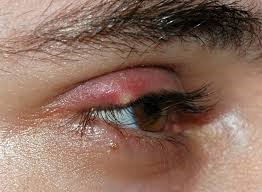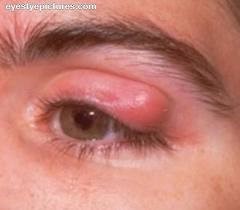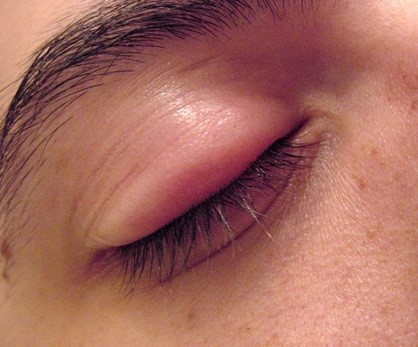Sty
Contents
What eye problems are similar to sties?
How will my doctor know if I have a sty?
How can I avoid getting a sty?
What is a sty?
A sty is a painful, red bump that forms on the edge of your eyelid. It may look like an acne pimple. The medical term for a sty is hordeolum (say: hor-dee-oh-lum).
A sty forms when bacteria get into the root of your eyelash (also called the follicle). This causes the oil glands in your eyelid to become blocked and infected. Sties may cause discomfort, but they are not usually serious and are easy to treat. They are very common, especially in children.
What eye problems are similar to sties?
A chalazion is a firm (but less painful) bump in the middle of the eyelid. It is caused by an inflamed, blocked gland. A chalazion may also cause blurry vision. Treatment for a chalazion is similar to treatment for a sty; however, the bump may not go away for 2 to 8 weeks.
What does a sty feel like?
The main symptom is a swollen, painful, red bump on the edge of the eyelid. You may also have the following:
- Discharge from the eye
- Tearing of the eye
- Scratchy feeling in the eye
- Crusting on the eyelid



When should I see a doctor?
If you have any concerns, or if your sty does not go away after 10 to 14 days, talk to your family doctor. You should also call your doctor if you have any of the following symptoms:
- An eyelid that is swollen shut
- Increased pain with home treatment
- Increased swelling after the first 2 to 3 days
- An eyelid that feels hot
- Thick pus or blood coming from the bump
- Blistering on your eyelid
- Fever or chills
- Vision changes
- Sties that keep coming back
How will my doctor know if I have a sty?
Your family doctor can diagnose a sty by examining your eye. No special tests are needed.
How are sties treated?
Sties can usually be treated at home and should go away in 7 to 10 days. Don’t try any over-the-counter medicines, drops or ointments without talking to your family doctor first.
The following are some things you can do to help your sty go away:
- Put a warm, damp compress on your eye for 5 to 10 minutes, 3 or 4 times a day. The compress should be warm but not so hot that it burns your eyelid.
- Keep the area around your eye clean.
- Avoid touching or rubbing your eye.
- Avoid wearing eye makeup or contact lenses while the sty heals.
- Never try to squeeze or pop any bumps near your eye. Doing this can spread infection.
If a sty requires medical treatment, your doctor may use antibiotics, minor surgery to drain the sty or a steroid injection to reduce swelling. Your doctor may also treat any underlying conditions that are causing your sty or making it worse.
How can I avoid getting a sty?
Anyone can get a sty, but they are more common in people who have any of the following:
- Poor eye hygiene, such as not removing eye makeup at night, using old or infected makeup, or not changing contact lenses frequently enough
- High stress
- Hormonal changes
- Dry skin
- Blepharitis, which is an inflammation of the eyelids that leads to redness, itchiness and the feeling that something is in your eye
- Acne rosacea
The best way to avoid getting sties is to practice good hygiene. Make sure you keep your eyes clean and remove makeup and dirt. Throw away old eye makeup (for example, mascara should be replaced every 2 to 3 months), and do not share makeup with others. Always wash your hands before touching your eyes. If you wear contacts, wash your hands before putting them in and taking them out. Also, make sure that you disinfect your lenses correctly with a contact lens cleaning solution.
Source: http://familydoctor.org/familydoctor/en/diseases-conditions/sty.printerview.all.html

